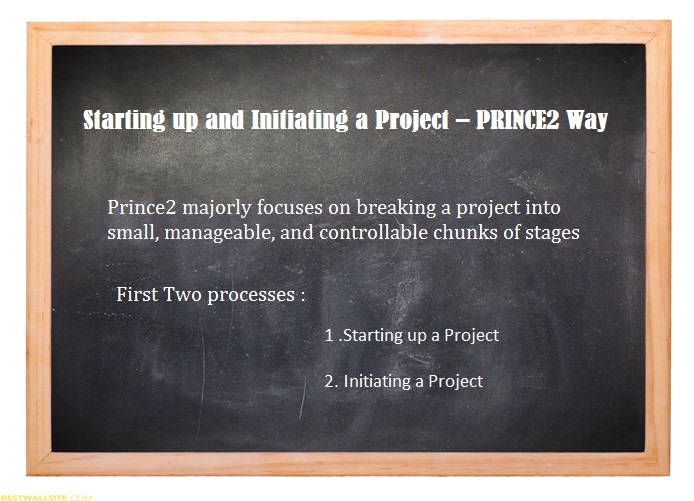The Projects in Controlled Environments – version 2 (PRINCE2) is a project management methodology developed by Central Computer and Telecommunication Agency (CCTA) as UK Government standard for Information Technology project management. This standard includes quality management, organization, and control of projects. Even though Prince2 was developed for Information Technology projects, it is widely accepted to manage many non-Information Technology projects.
Prince2 majorly focuses on breaking a project into small, manageable, and controllable chunks of stages. To successfully manage a project by using PRINCE2 methodology, you must conform to seven processes. In this article you will know about first two processes that are closely interwoven. These processes are:

Starting up a Project
This is the first process of PRINCE2 wherein you create a project board. Then, you assign the project to a project manager and appoint a project management team. The project management team prepares a short description of the project and defines the project approach. The team prepares a high level business case and requests the project board to authorize this stage. The project then moves into the next process.
Initiating a Project
In this process you continue with the work that you started in the Starting up a Project process. You complete the business case and plan for the next stage of the project. Additionally, you create project files and plan for the quality of the project. The output of this process is a Project Initiation Document, which you send to the project board to authorize the project. A typical Project Initiation Document consist of the following sections:
Purpose
In this section, you define the purpose of the project. You also define the desired output of the project.
Scope
In this section, you define the scope of the project. The scope of the project includes what items are included and what are excluded from the list of stakeholder assumptions. Additionally, you define the boundaries of the project, such as type of work, problem, client, and geographical area. Ensure that you create a detailed scope such that there is no misunderstanding among stakeholders at a later stage of the project.
Background
In this section, you establish the reason for the taking up the project. Additionally, you must provide a rational behind selecting the project with respect to other projects being considered. A well defined background helps you to acquire resources required for the project.
Initial Project Plan
In this section, you specify the initial project plan while considering the proposed date from the stakeholders. You must provide justification for any deviation from the proposed date. Additionally, you must provide appropriate justification for any changes in the launch date and scope of the project.
Quality Plan
In this section, you include the project quality plan, which is typically prepared by the quality assurance team. This plan includes aspects to be delivered as a part of the project, high level design, use cases, test scripts and reports, and post development review. The quality plan defines checkpoints in the project life cycle to ensure the quality of the product.
Project Control
In this section, you define various controls you plan to place in the project life cycle. These controls include checks to the budget, schedules, and quality of the product. Defining controls help you to monitor the overall progress of the project.
Risks
In this section, you identify high level risks that you foresee when taking the project. In response to the risks you have identified, you define the risk mitigation plan and a detailed exception plan to make sure that the project keeps moving and the motivation level of the team is high.
Approval
Finally, you must get the Project Initiation Document approved and signed off by the stakeholders. Getting the document approved ensures that there is no misunderstanding among the stakeholders and everyone involved in the project have the same expectations.
